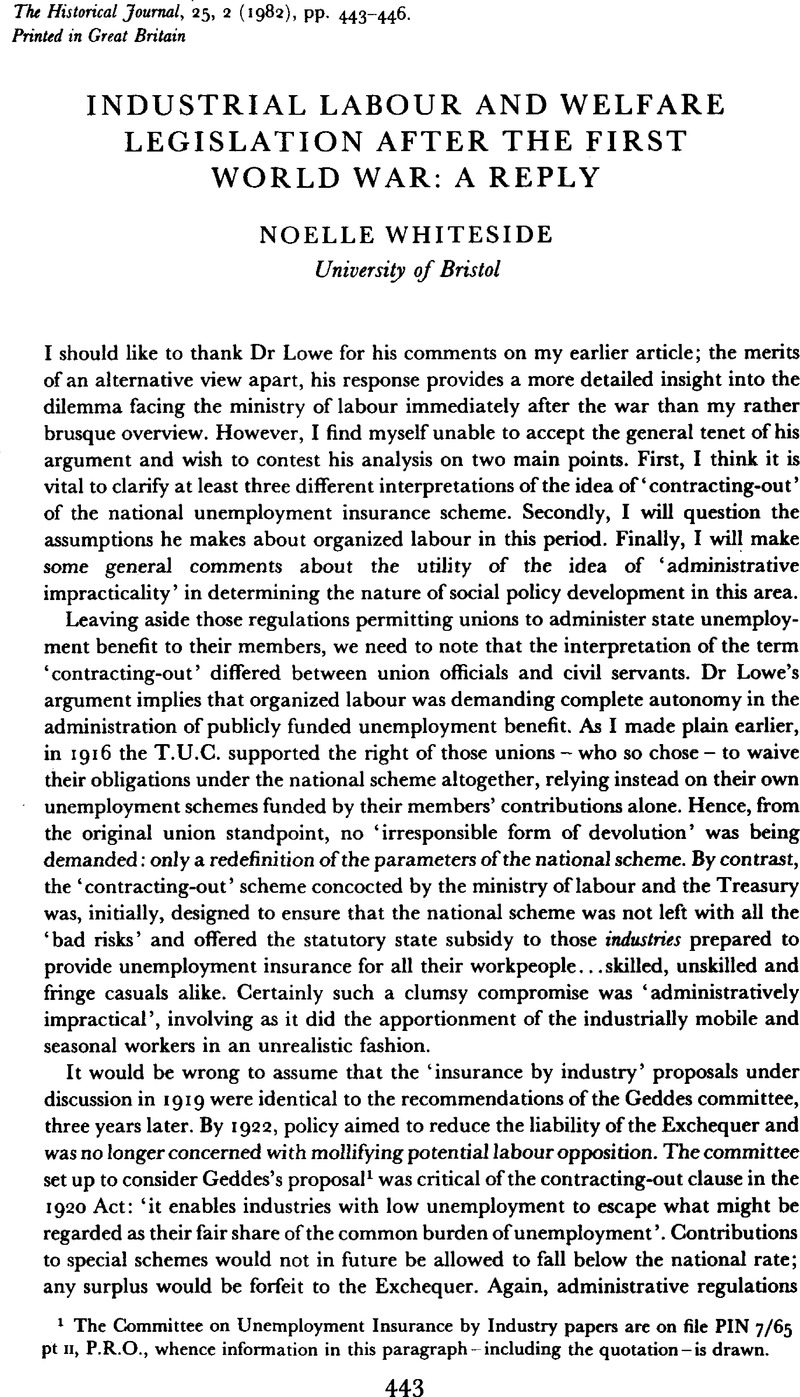No CrossRef data available.
Published online by Cambridge University Press: 11 February 2009

1 The Committee on Unemployment Insurance by Industry papers are on file PIN 7/65 pt ii, P.R.O., whence information in this paragraph - including the quotation-is drawn.
2 The wool and worsted trade were still discussing the possibility of developing a special scheme.Ibid.
3 Zeitlin, J., ‘Craft control and the division of labour: engineers and compositors in Britain 1890–1930’, Cambridge Journal of Economics, 3 (1979), 263–74.Google Scholar
4 Crossick, G., An artisan elite in Victorian society (London, 1978), p. 157Google Scholar. Foster's, John chapter in Skelley, J. (ed.), The General Strike 1926 (London, 1976) goes further in refuting the notion that the concept of skill was based on control of the labour process. He argues that management constructed skill and hence created a separate, privileged sector of the workforce. Stedman Jones maintains that craft control in the workplace had disintegrated as early as 1850; see ‘Class struggle and the Industrial Revolution’, New Left Review, 90 (1975).Google Scholar
5 Masters, unions and men (London, 1980).Google Scholar
6 The footwear industry was mechanized by the late nineteenth century; the Boot and Shoe Operatives recruited men whose skills depended on a wide variety of machines: More, C., Skill and the English working class (London, 1980), pp. 110–11.Google Scholar
7 The Gasworkers had introduced an unemployment scheme before the First World War (as I pointed out in my original article). Probably the best-known example is the Workers’ Union, arguably the largest union in the country in 1920 (Hyman, R., The Workers’ Union (1971), p. 127), which gave unemployment benefit to its members.Google Scholar
8 Four ministers -Hodge, Roberts, Home and MacNamara - held office between the creation of the ministry and the arrival of the Unemployment Insurance Act on the statute book in 1920.
9 Changes in administrative practice in the 1920s are described in Deacon, A., In search of the scrounger (London, 1974).Google Scholar